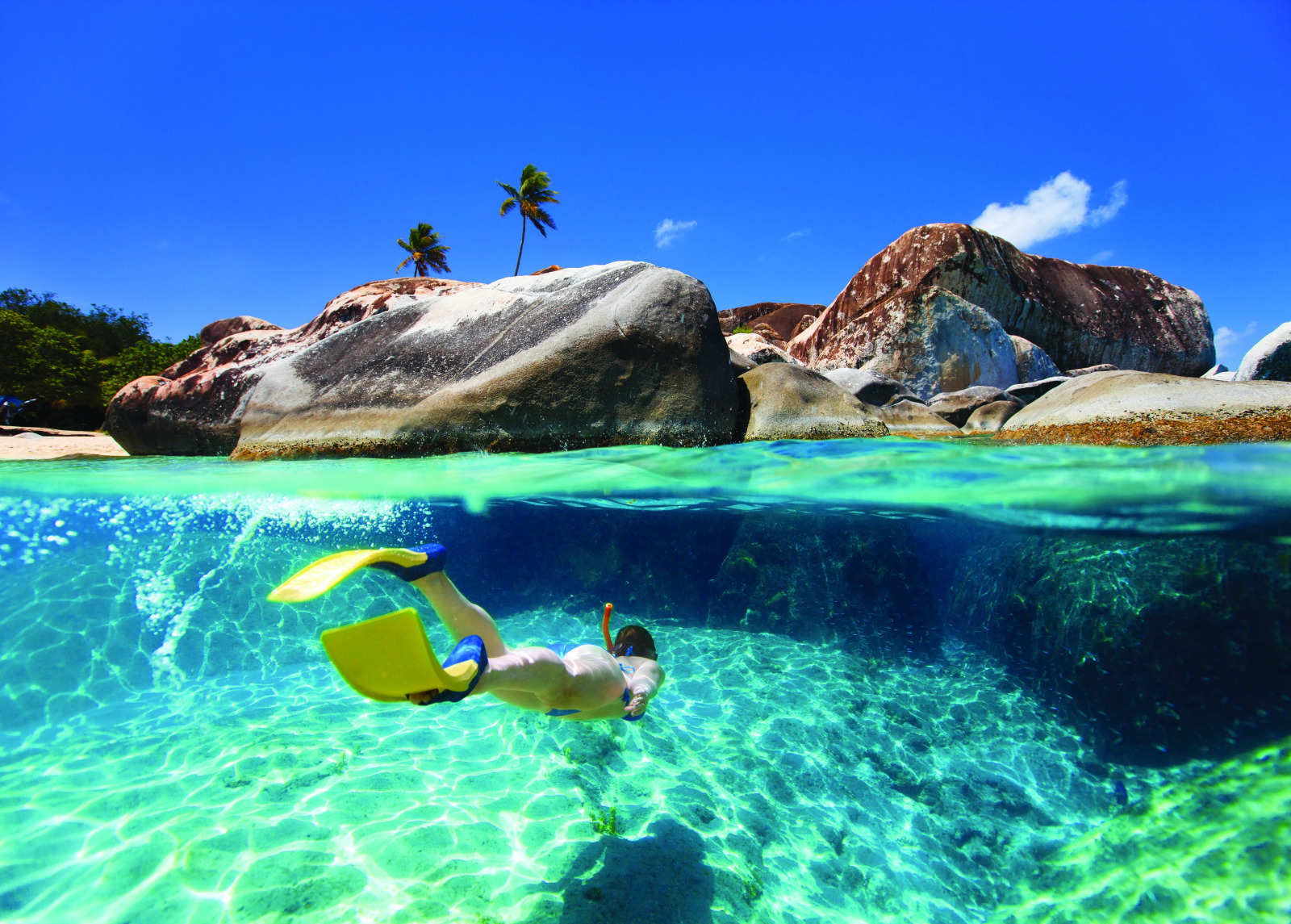There are few places on earth that are quite so magnificent, awe-inspiring and stunningly beautiful as The Baths National Park on Virgin Gorda’s south-west point.
Mystifying giant boulders are scattered over more than six acres, some up to 40 feet in diameter. The Baths is in a league of its own and should be on every ‘must-see’ list.
It is hard to imagine how such enormous boulders ended up on this mile-long stretch of sandy beach – some in the turquoise water, others piled high along the beach, one on top the other, balanced precariously, creating a unique spectacle and allowing for natural pools and grottoes underneath.
There is a geological answer to the spectacular formation of this unique natural wonder.
The origin of the boulders occurred about 50 million years ago when molten rock (magma) pushed its way upward, became exposed, cooled and solidified forming large slabs of mineral rich granite; a massive body of crystalline igneous rock known as a batholith, hence the name The Baths.
The temperature of the magma, possibly up to 2,000 degrees centigrade, caused the various minerals to greatly expand. When they cooled, the boulders split and cracked.
As rain falls through the atmosphere, carbon dioxide is dissolved and pure rainwater becomes a mild carbonic acid (rain). This exposure to the elements causes discolouration, aging and weathering. Over millennia all these forces combined to create the diverse natural wonders we see today.
The boulders display an assortment of different shapes and forms that stimulate the imagination. There’s the Grand Cavern, Neptune’s Hideaway, the Throne, the Turtle and the Anvil, to name just a few of the natural sculptures.
Perhaps the most impressive natural sculptures are those that have gone through a hollowing-out process. Most amazing is the huge formation known as Neptune’s Hideaway.
From the beach, crawl through the small opening between the rocks (there’s a sign) and emerge into the Grand Cavern, probably the most photographed spot in the BVI. A spectacular cave with a pool of water being continuously renewed as the waves wash in and out. At certain times of the day sunlight shines through openings in the cavern’s ceiling reflecting off the water and producing dancing patterns on rock faces.
After a refreshing dip there, continue on the trail via the walkway with wooden ladders and rope handholds to the adjacent Neptune’s Hideaway.
As you continue along the trail you will eventually exit the grottoes. Here you will find an almost impossible balanced boulder looking like an anvil set in a pool of translucent turquoise. It looks as though it would topple at the touch of a finger – but it’s been there for 50 million years!
The trail opens onto a small beach, Devil’s Bay, where the snorkeling is stunning. Corals have attached themselves to the boulders. Elkhorn and Staghorn are not uncommon and a myriad of fish take advantage of the many cracks and crevices, ledges and caves.
Access to the Baths by sea: Check weather forecasts in advance in case of large swells. Tie up to a red mooring ball. Dinghy close to the restricted area, jump into the water and swim or snorkel the short distance to the beach. There, a sign will guide you to the trail.
By land you will arrive at ‘The Top of the Baths.’ A sign will direct you to the trail.
Visitors take note – Proper footwear is needed as the boulders can be slippery. This is due to residual mineral grains of primarily white quartz that are left behind after chemical decay caused by rain and other weathering factors. Much of the beach sand is composed of white grains of quartz and black grains of hornblende, two of the main components of granite.
Your visit to The Baths will undoubtedly be a highlight of your BVI visit. You just cannot fail to have a wonderful time.
Special thanks to Charles A Ratte, Geologist.
Please note that some of the names of the rock formations are not official.


